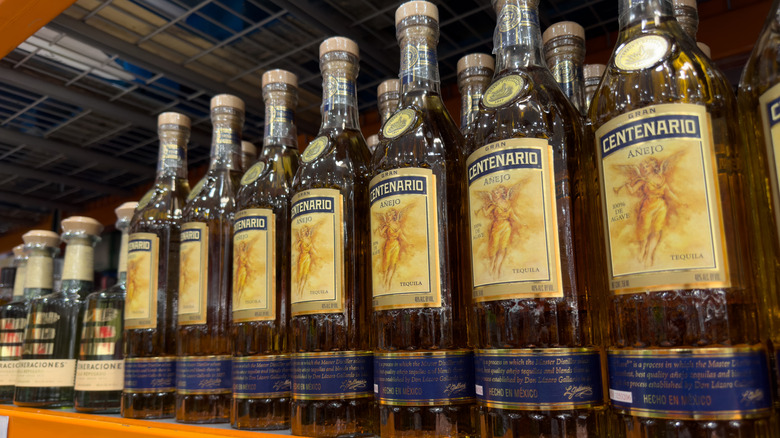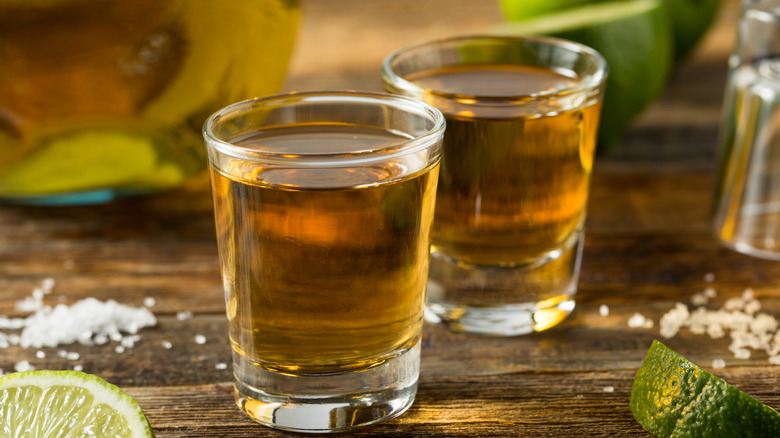Anejo Vs Extra Anejo Tequila: What's The Distinction?
Like wine, it's tempting to pick out tequila based on the artsy label or the creative shape of the bottle. While this certainly isn't wrong, there are some key distinctions between certain types of tequila, aside from the price point and brand quality. If you've ever examined a tequila label, you may have noticed words like blanco, reposado, joven, and añejo. These words refer to the length of time the tequila has been aged. Easy enough to understand — but what about that bottle that claims to be "extra añejo"?
The word añejo is a Spanish word that means "aged" in English. Therefore, the literal translation would be "extra aged," and that's exactly what extra añejo tequila is. While añejo tequila has been aged for one to three years, extra añejo tequila has been aged for a minimum of three years. Both are typically aged in an oak wood barrel, which begins to impart warm, toasted flavors over time.
If you see a caramel-colored tequila on the shelves, chances are it is an añejo, while extra añejo has deeper and darker caramel colors. Younger tequilas have sharp notes of agave, but this flavor starts to mellow out after the tequila is aged in oak. Añejo has a balance of the traditional agave flavors, but with more warmth and notes of vanilla, caramel, and other dessert-like flavors. Meanwhile, extra añejo tequila also has deeper woody flavors, closer to that of cognac or whiskey.
How to drink añejo tequila
Due to the extended aging process of both añejo and extra añejo, these tequilas are found at a higher price point. Typically, the longer it is aged, the more expensive the bottle will be. An añejo tequila aged for a year can be found for an average price of around $40-$80, and Costco's Kirkland tequila brand offers an affordable option. Extra añejo can have a far larger range of prices; the younger bottles start at around $150, while older bottles around five to nine years can be priced at $300-$700.
Añejo tequilas are nothing like the bottom shelf tequilas served as shots at the average dive bar. While there are plenty of great mixers for tequilas, añejo tequilas are meant to be sipped on alone and enjoyed slowly; the best comparison here would be a fine whiskey. Añejo tequila can be sipped on neat or on the rocks. While the flavors are best savored solo, they can also be incorporated in select cocktails like an Old Fashioned or Manhattan.
Extra añejo is for those celebrations where you want to pull out a special bottle to commemorate the occasion. This tequila is best at room temperature or slightly under and without ice to ensure that the rich deep flavor is not watered down. Each sip of extra añejo is meant to reveal a new layer of flavor.

